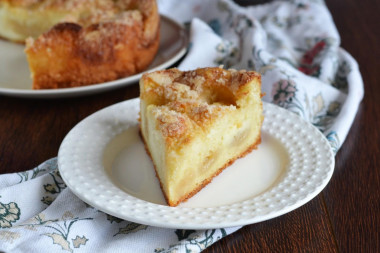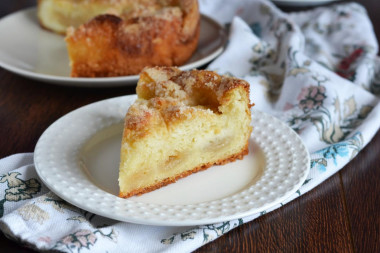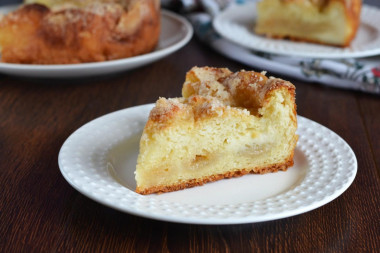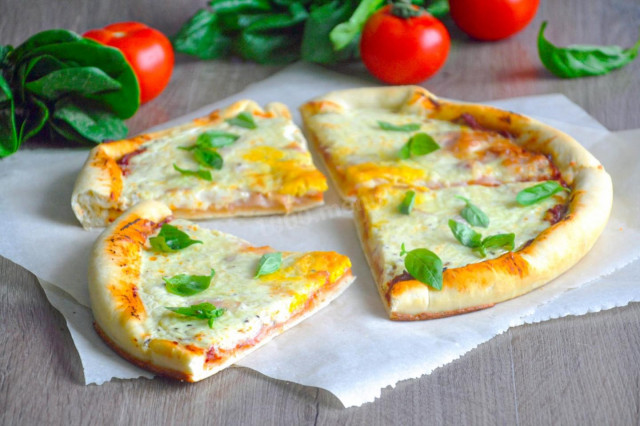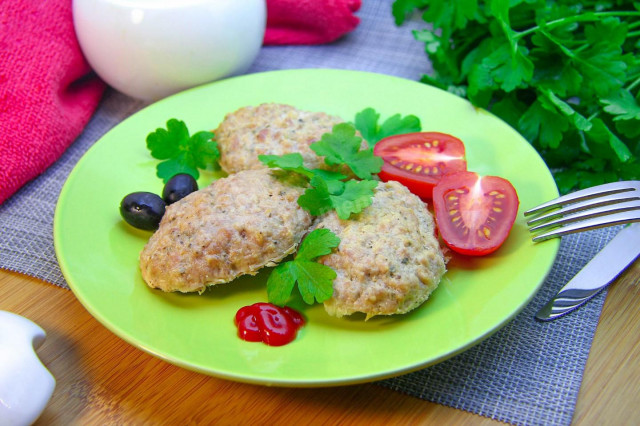Composition / ingredients
Step-by-step cooking
Step 1:

How to bake this delicious pie with milk? Prepare all the necessary ingredients for the dough. Milk, eggs and butter should be at room temperature, so take them out of the refrigerator in advance. It is better to get the butter in 2-3 hours so that it completely thaws not only from the outside, but also inside. I've been getting butter since the evening. Use flour of the highest grade.
Step 2:
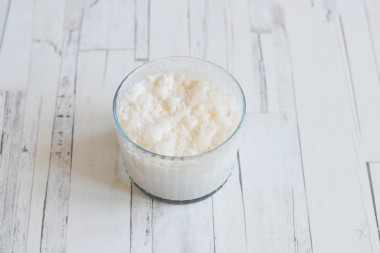
In warm milk, heated to 37-40 °C Add 1 tsp sugar and dry yeast. Leave the mixture for 10-15 minutes until a fluffy cap appears. This means that the yeast is active and can be cooked further. If the caps did not appear, then either the yeast was stale, or the milk was over 50 ° C and the yeast died.***
Step 3:

Beat eggs with a mixer until fluffy foam. It is not necessary to beat for a long time, literally 2-3 minutes.
Step 4:
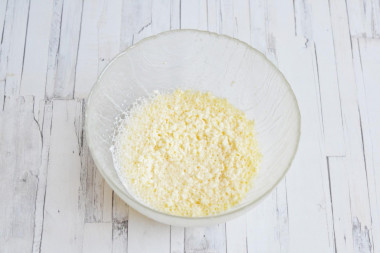
Add the soft butter and vanilla sugar and whisk again. Small lumps will appear in the mass. That's how it should be.
Step 5:
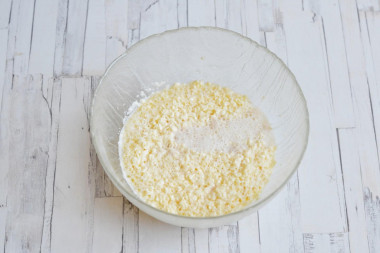
Pour in the activated yeast and whisk again at low speed.
Step 6:

Add the sifted flour in parts and knead the dough. At first, you can mix with a mixer at low speed, but then, when the dough begins to gather around the beaters into a lump, it is better to continue mixing with a spatula or special beaters for dough. If there is a kitchen machine, you can knead the dough in it.
Step 7:
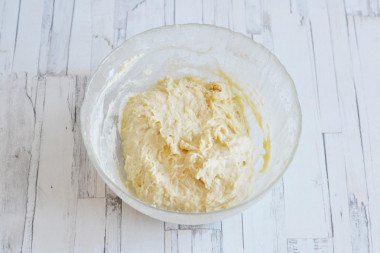
You should get a very soft, tender sticky dough.
Step 8:

Cover the bowl with the dough with a towel and leave for 1 hour in the heat to rise.
Step 9:
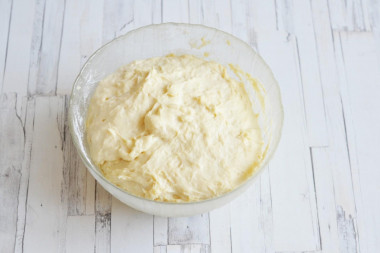
This is what the risen dough looks like. It's soft and fluffy.
Step 10:
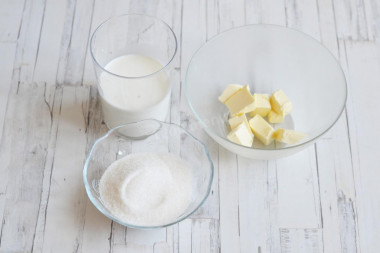
Prepare the necessary ingredients for sprinkling.
Step 11:
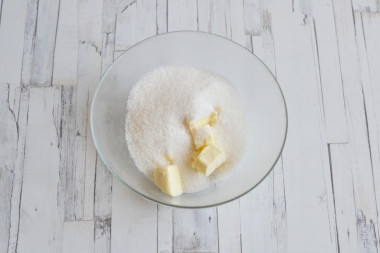
Cut the cold butter into small cubes so that it is more convenient to rub it. Pour sugar into the cold butter.
Step 12:
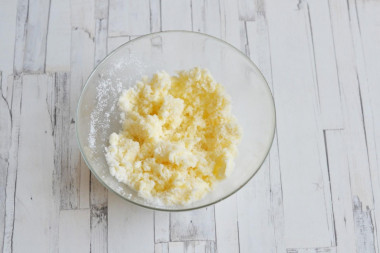
Rub everything with a spoon or with your hands into a lumpy crumb. Put the butter and sugar in the refrigerator so that it does not start to melt. The crumb should be cold.
Step 13:
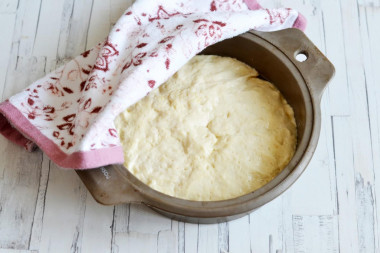
Put the dough that has come up with greased with vegetable oil with your hands. It is better to take a baking dish with high sides, because the dough rises during baking and the butter melted from the hot oven can flow through the walls of the mold. Leave the dough under the towel for another 30 minutes.
Step 14:
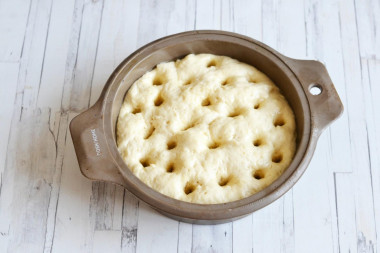
With a finger smeared in vegetable oil, make several indentations on the surface of the dough.
Step 15:
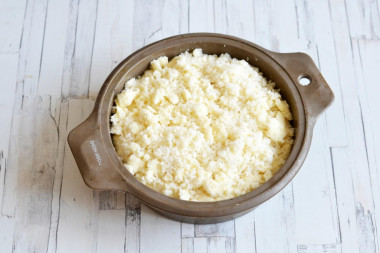
Sprinkle the cake evenly with sugar and butter crumbs. Put the pie in the oven. Put a piece of parchment under the cake pan in case the butter still spills over the walls of the mold. So it will not drip the bottom of the oven and will not burn. Bake the pie in a preheated 180 ° C oven for about 25-30 minutes.
Step 16:

Pour cream over the pie and return to the oven for another 7-10 minutes until a golden crust appears on the surface. Enjoy your meal!
*** If there is no cooking thermometer, then it is easy to determine the desired temperature literally manually: you need to drop a drop of water on the inside of your wrist. If the feeling is pleasant, not cold and not hot, then the temperature is correct. Already at 45 ° C, yeast becomes uncomfortable and they work slower, and at 50 ° C they begin to die. Therefore, the most important point when working with the dough is not to kill the yeast at the very beginning.
Be prepared for the fact that you may need more or less flour than indicated in the recipe. Focus not on the amount of flour, but on the desired consistency of the dough. Read a lot of useful information about flour and its properties in this article!
Keep in mind that everyone's ovens are different. The temperature and cooking time may differ from those specified in the recipe. To make any baked dish successful, use useful information in this article !
Caloric content of the products possible in the composition of the dish
- Whole cow's milk - 68 kcal/100g
- Milk 3.5% fat content - 64 kcal/100g
- Milk 3.2% fat content - 60 kcal/100g
- Milk 1.5% fat content - 47 kcal/100g
- Concentrated milk 7.5% fat content - 140 kcal/100g
- Milk 2.5% fat content - 54 kcal/100g
- Buttermilk - 36 kcal/100g
- Cream of 20% fat content - 300 kcal/100g
- Cream of 10% fat content - 120 kcal/100g
- Cream - 300 kcal/100g
- Chicken egg - 157 kcal/100g
- Egg white - 45 kcal/100g
- Egg powder - 542 kcal/100g
- Egg yolk - 352 kcal/100g
- Ostrich egg - 118 kcal/100g
- Whole durum wheat flour fortified - 333 kcal/100g
- Whole durum wheat flour, universal - 364 kcal/100g
- Flour krupchatka - 348 kcal/100g
- Flour - 325 kcal/100g
- Granulated sugar - 398 kcal/100g
- Sugar - 398 kcal/100g
- Butter 82% - 734 kcal/100g
- Amateur unsalted butter - 709 kcal/100g
- Unsalted peasant butter - 661 kcal/100g
- Peasant salted butter - 652 kcal/100g
- Melted butter - 869 kcal/100g
- Salt - 0 kcal/100g
- Vanilla sugar - 379 kcal/100g
- Dry yeast - 410 kcal/100g


